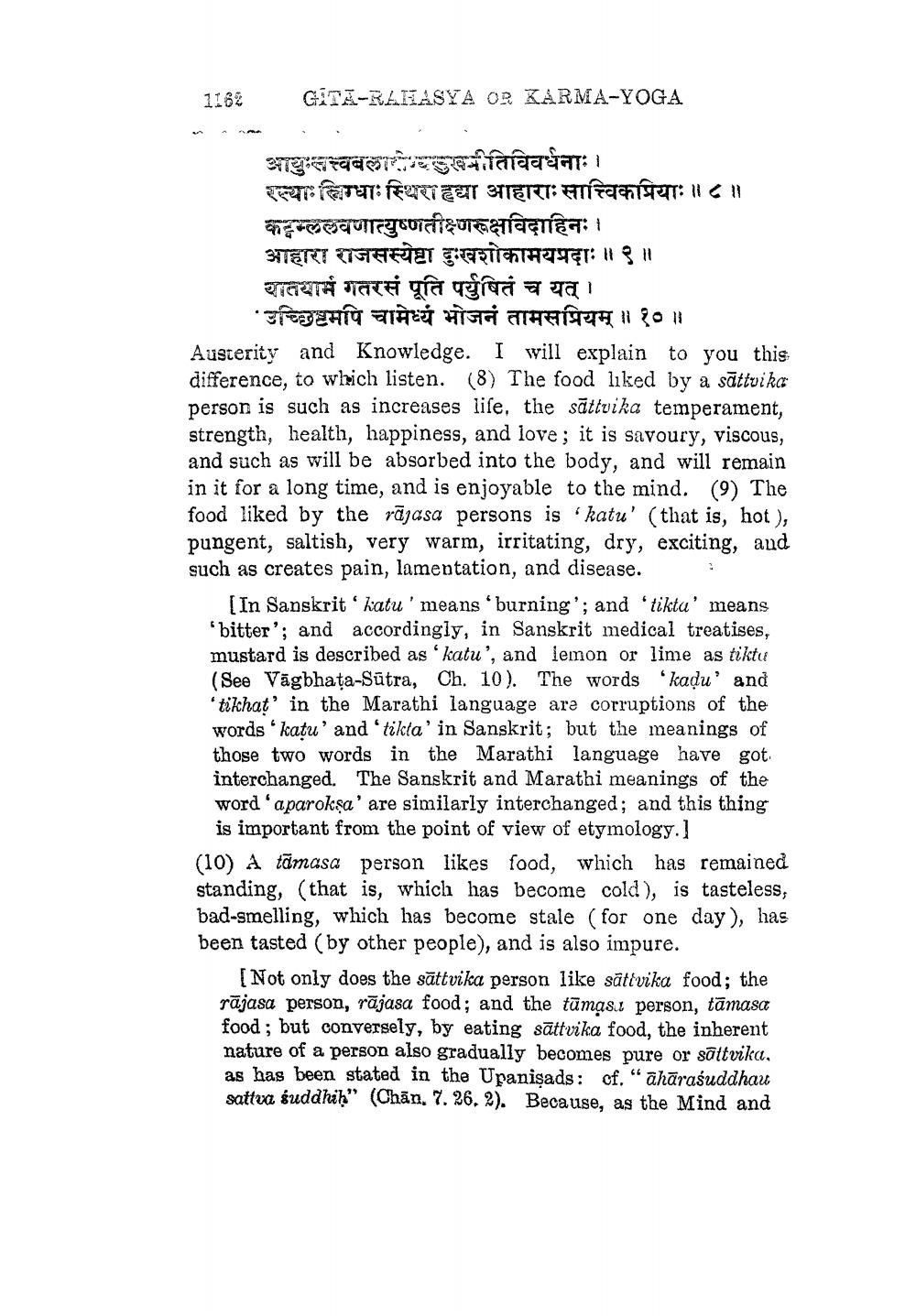________________
1162
GÍTA-RAHASYA OR KARMA-YOGA
SigaTT aifaaaaat: 1
RIT: FESTET: FERRETET STETTT: En feletarrest: 116 11 कदम्ललवणात्युष्णतीक्ष्णरूक्षविदाहिनः। आहारा राजसस्येष्टा दुःखशोकामयप्रदाः ॥९॥
TATA TOTE gia nga ana
GESCHIC GIÀET HER OHEITTH 1180 11 Austerity and Knowledge. I will explain to you this difference, to which listen. (8) The food liked by a sättvika person is such as increases lise, the sattuika temperament, strength, health, happiness, and love; it is savoury, viscous, and such as will be absorbed into the body, and will remain in it for a long time, and is enjoyable to the mind. (9) The food liked by the rajasa persons is katu' (that is, hot ), pungent, saltish, very warm, irritating, dry, exciting, and such as creates pain, lamentation, and disease. :
[In Sanskrit katu' means 'burning'; and 'tiktu' means "bitter'; and accordingly, in Sanskrit medical treatises, mustard is described as 'katu', and lemon or lime as tiktu (See Vāgbhata-Sūtra, Ch. 10). The words "kadu' and tikhat' in the Marathi language are corruptions of the words katu' and 'tikta' in Sanskrit; but the meanings of those two words in the Marathi language have got interchanged. The Sanskrit and Marathi meanings of the word 'aparokşa' are similarly interchanged; and this thing
is important from the point of view of etymology.] (10) A tāmasa person likes food, which has remained standing, (that is, which has become cold ), is tasteless, bad-smelling, which has become stale (for one day), has been tasted (by other people), and is also impure.
(Not only does the sättvika person like sättvika food; the rājasa person, rājasa food; and the tūmas. person, tāmasa food; but conversely, by eating sättvika food, the inherent nature of a person also gradually becomes pure or sättvika, as has been stated in the Upanisads: cf. “ahārasuddhau sattua suddhih" (Chăn. 7. 26. 2). Because, as the Mind and




